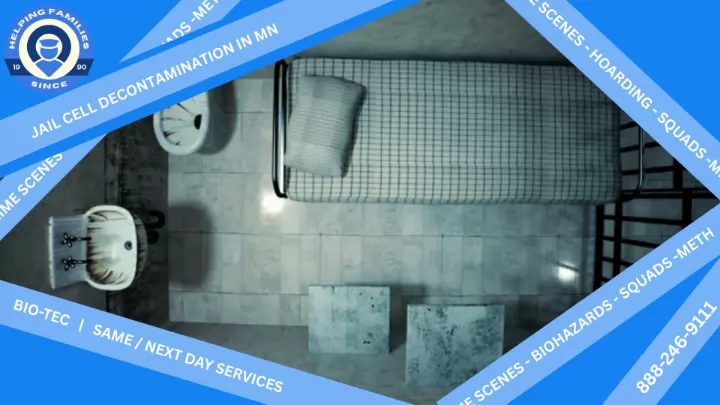Gastrointestinal Bleeding Cleaning Services Near Me: Bio-Tec's Expert Biohazard Remediation Few medical emergencies are as shocking and visually distressing as an episode of severe gastrointestinal (GI) bleeding. The unexpected expulsion of blood and bodily fluids can rapidly contaminate an environment, whether in a home, a healthcare facility, or a public space. Beyond the immediate shock and concern for the individual's health, a critical and often overlooked danger emerges: the presence of significant biohazards.Blood, vomit, and other bodily fluids associated with GI bleeding can contain a wide array of dangerous pathogens, including vir

Gastrointestinal Bleeding Cleaning
Gastrointestinal Bleeding Cleaning Services Near Me
Gastrointestinal Bleeding Cleaning Services Near Me: Bio-Tec's Expe...
Is there a difference between cleaning a regularly maintained interior and one heavily contaminated?
Yes, heavily contaminated interiors require a more extensive cleaning process including multiple decontamination stages.
Are pigeon droppings hazardous to pets?
Yes, pets can be exposed to harmful bacteria and fungi if they come into contact with contaminated areas.
What protocols are applied if biohazards contaminate removable police shields?
Shields are removed, disinfected, and sanitized before being returned to service.
How do I clean pigeon droppings from sidewalks and driveways?
Use a pressure washer or scrubbing brush with a disinfectant solution to remove droppings effectively.
What causes the smell of decomposition in a house or vehicle?
The distinctive and highly unpleasant smell of decomposition, whether in a house or vehicle, is primarily caused by the biological breakdown of organic matter by bacteria and other microorganisms. This process releases a complex mixture of volatile organic compounds (VOCs) and gases. When a living organism dies, its cells begin to break down (autolysis), and then microorganisms (primarily bacteria from the gut, but also environmental bacteria and fungi) begin to consume the tissues. This process, known as putrefaction, produces a cocktail of odorous chemicals. Key compounds responsible for the characteristic smell include: Cadaverine and Putrescine, aptly named for their association with decaying flesh, are polyamines that give off a putrid, rotten odor. Hydrogen sulfide, known for its rotten egg smell, and various other sulfur-containing compounds like methanethiol (rotting cabbage) and dimethyl disulfide/trisulfide (garlic-like) are also prominent byproducts of bacterial activity. Ammonia and methane are also released as decomposition progresses. The specific profile and intensity of the odor can vary depending on factors such as temperature, humidity, oxygen availability, the type of organic matter, and the presence of insects. In a house, this could be from a deceased animal in a wall, a neglected food spill, or an unattended death. In a vehicle, moisture ingress combined with organic debris (e.g., forgotten food, spilled drinks, tracked-in dirt) creates an ideal environment for microbial growth, leading to these same putrefactive odors within the enclosed space of the cars interior. Understanding these chemical byproducts is crucial for selecting the most effective odor removal strategies, which aim to neutralize or eliminate these specific compounds rather than simply masking them.
How should vehicles be cleaned after transporting wildlife involved in a case?
Cleaning involves removing animal biohazards and ensuring no parasites are present.
How long does the odor removal process take?
The duration of the odor removal process varies depending on factors such as the severity of the odor, the size of the property, and the techniques required. Simple cases, like pet odors, may be resolved within a few hours, while more complex issues, such as mold or smoke damage, can take several days. Professionals provide an estimated timeline after assessing the situation, ensuring transparency and efficient service. Scheduling flexibility allows treatments to be conducted at convenient times for clients, minimizing disruption.
What characterizes the Dry/Skeletal stage?
The body is reduced to bones and tough connective tissue. Environmental factors greatly influence the timing of this stage, and insect activity is minimal.
What should I do if my neighbor is a hoarder?
If your neighbor is a hoarder, it’s best to approach the situation with sensitivity. Hoarding can create safety hazards, pest infestations, and unpleasant odors that affect neighboring properties. If the hoarding poses a significant risk, you may need to contact local authorities, such as code enforcement or health departments. Some communities offer outreach programs to help hoarders receive professional assistance. Encouraging a neighbor to seek help through hoarding cleanup services or mental health professionals can also be beneficial.
What equipment is used in biohazard cleaning?
Personal protective equipment (PPE), specialized cleaning agents, and containment tools are commonly used.
